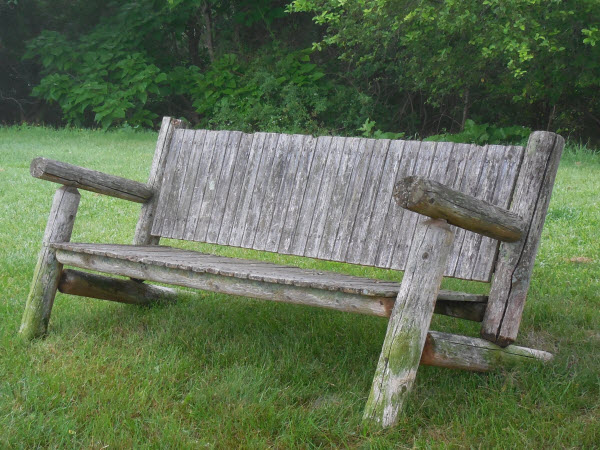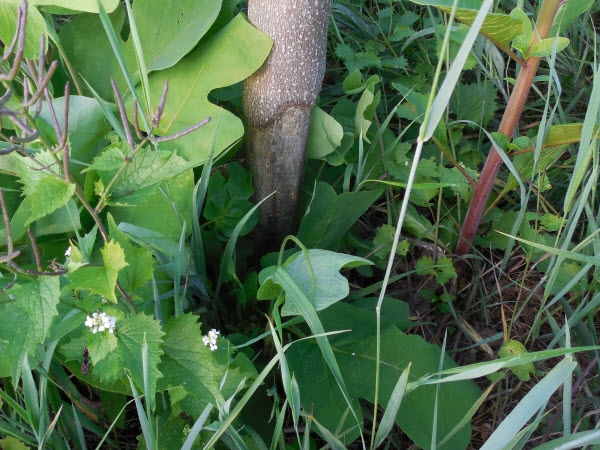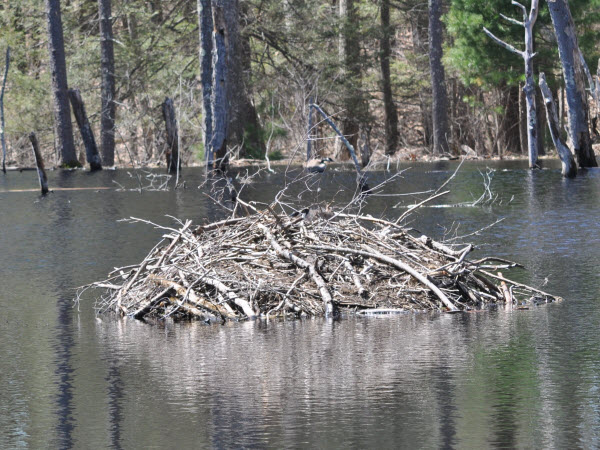The winter of 2016 was warm - not so many ice formations to find! But even on a warm winter day (27 Feb) there was ice, here encasing early buds. I thought the bent fingers of ice were interesting, in the left of the image.

In each of this group of photos is a small piece of ice that has formed on a plant or tree stump, and then been orphaned as the level of the water has dropped. The light and reflections now show the ice high on the plant, the surface of the water, and then the reflection of the piece of ice - from underneath, of course!
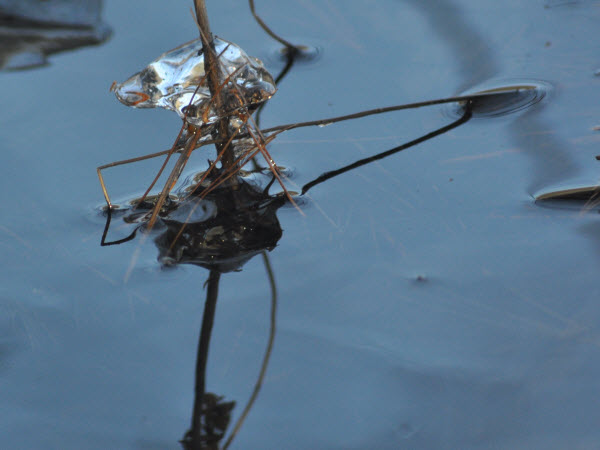
Usually the surface of the ice is smooth, maybe with some material embedded. But there was one place where the surface of the ice was much more complicated - I don't know if this was crystals around something that was on the surface of the water, or another cause.
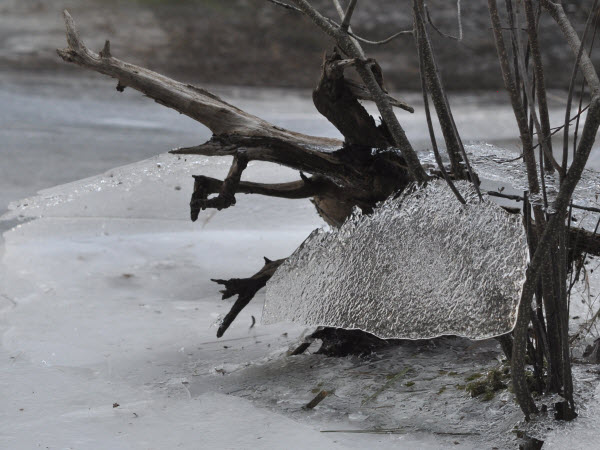
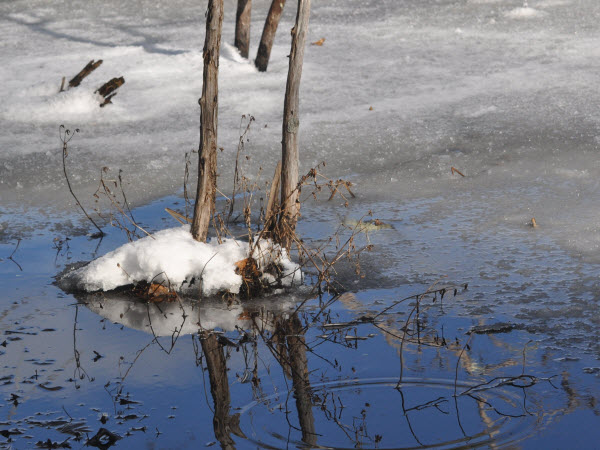
The winter of 2017/8 was warm too - seems to be a theme. I presume this January formation has been modified by the warm weather.
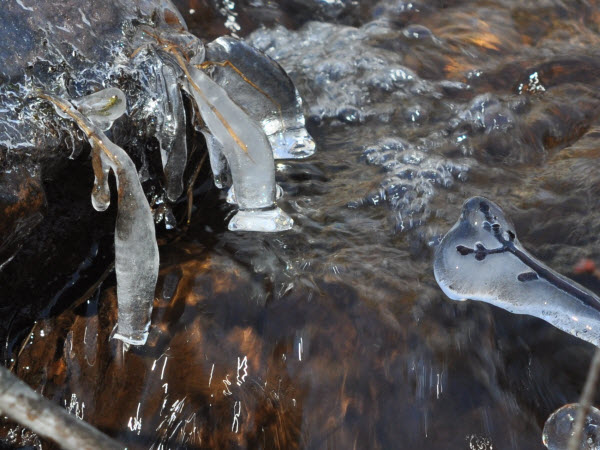
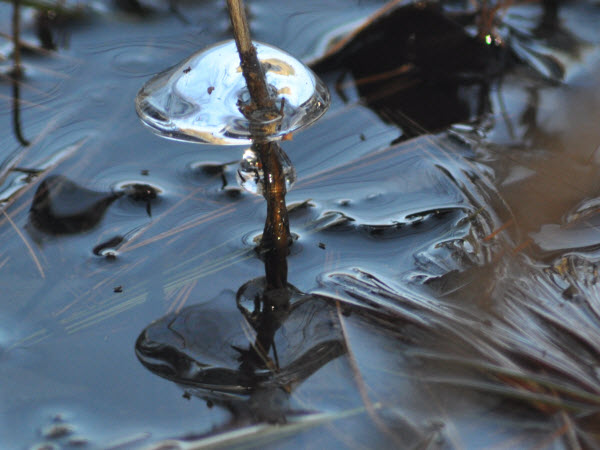


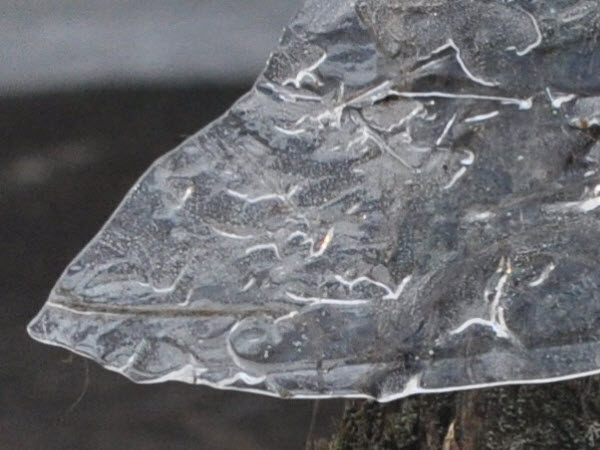
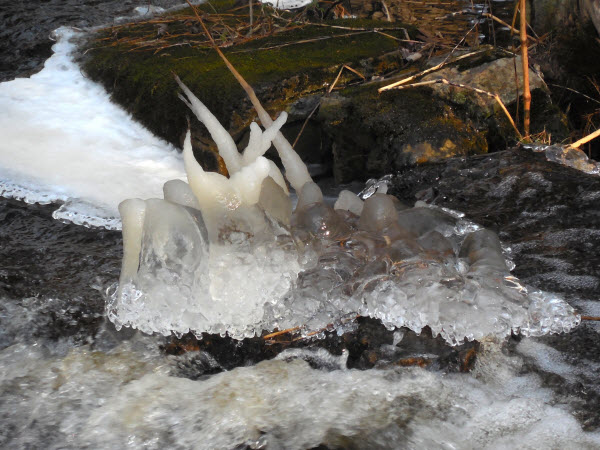
Needle Ice
Frost heaves are a well understood phenomenon in the north. Needle ice is new to me, though closely related. The photos below were taken Feb 1, 2014 - it had been very cold, and there was an upwelling of groundwater in this location, about halfway up a small hill in the woods.
My understanding of needle ice comes primarily from a wikipedia article, http://en.wikipedia.org/wiki/Needle_ice and http://en.wikipedia.org/wiki/Frost_heaving. Better to go to the references for more in depth reading!
My takehome is this, however. When the air temperature is cold, there will be a freezing front, or freezing boundary, where the ground is frozen above and warmer below. If there is a condition where warm water is pushing up against that freezing front, then will get frost heaves or needle ice, depending upon the depth of the freezing front. In the case of the freezing front near the surface, water brought to the surface freezes and contrinubtes to a growing needle-like ice column. In the case of a frost heave, the freezing front is deeper, and water pushed to the surface contributes to a lens shaped area of ice within the soil - an ice lens.
The wikipedia reference speaks of water brought to the surface via capillary action. In the case of the pictures here, water is upwelling as a minor spring.
The first photo shows ice crystals present in the dirt, being pushed up by the expansion of the ice as it is formed. Ice needles are visible within this space, and are the subject of the photos that follow.
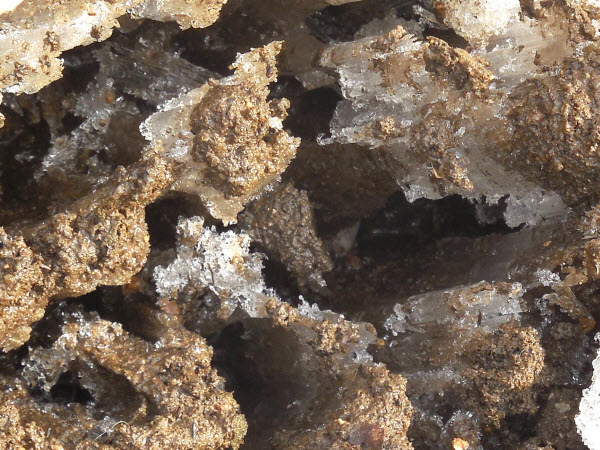
I believe the tiered arrangement of needle ice is characteristic.
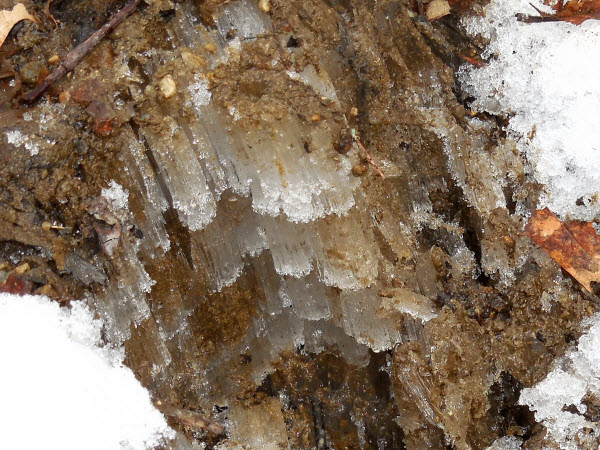
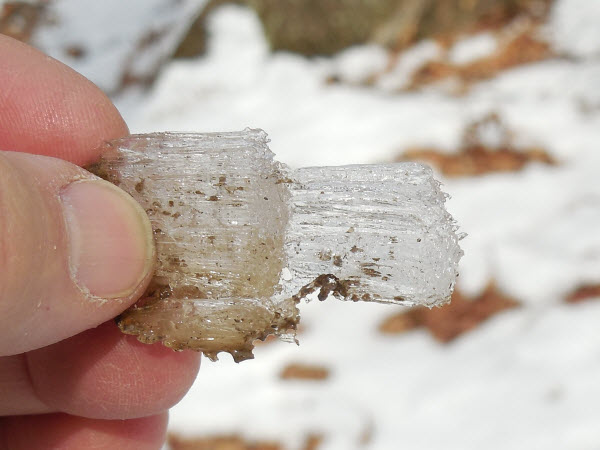

A detail of the photo above. It is interesting to see the ice crystals of pure water emerging from the soil.
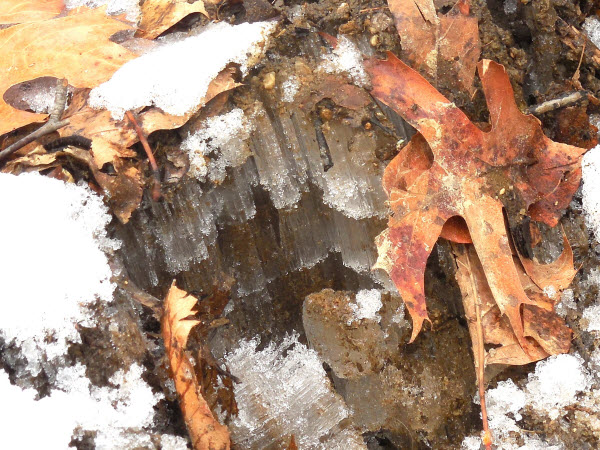
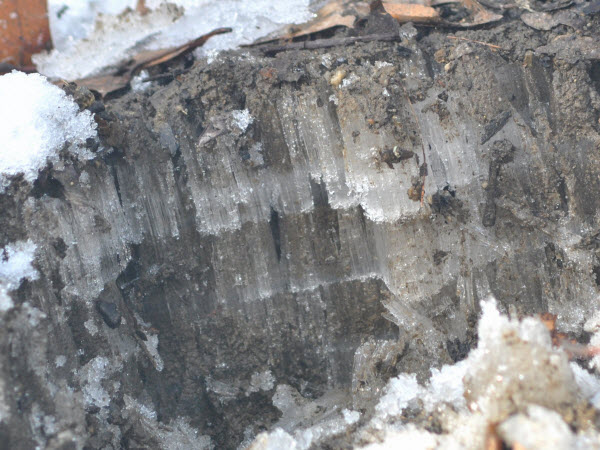

A warm winter for Massachusetts this early 2020 - nights not always below freezing - though the ground is frozen. Last night was a zero degree night, however (Fahrenheit), and I found these ice crystals pushed up from an area where the ground water was at the surface. I have no idea whether these crystals grew all overnight, though it has been so warm that seems likely. The images of needle ice, above, is all below ground - ice needles that have grown and pushed the ground up. These seem to have grown from the surface of the ground and extruded up, and so different. Maybe this comes about because the freezing front is at the ground surface, rather than below the surface, though still with the upward pressure of ground water at this location.
I found a reference that I like: Ice Formations with Daily (Diurnal) Freeze/Thaw Cycles, Dr. James Carter.
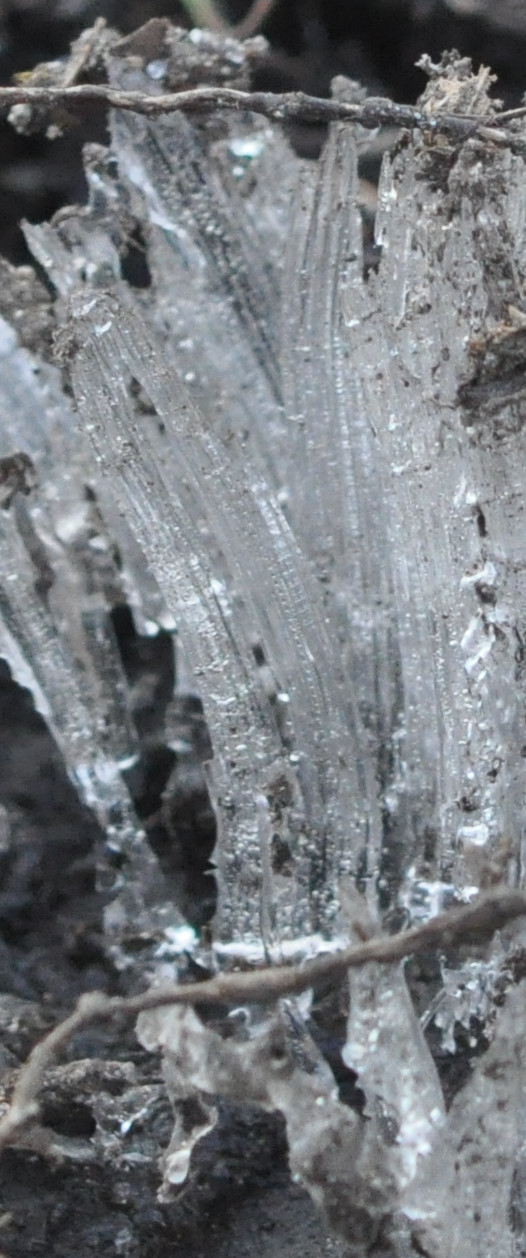
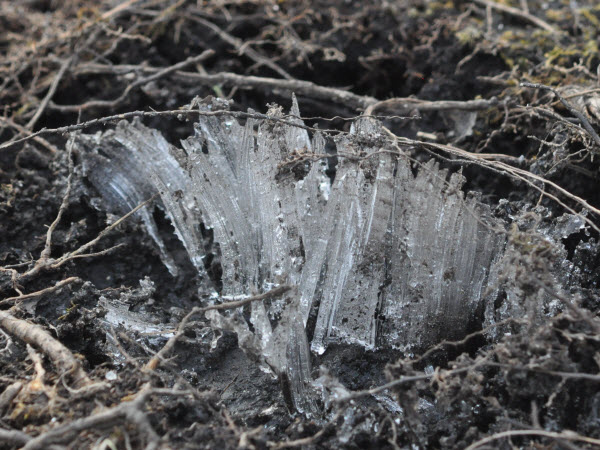
The image at left is at full resolution - open (maybe r-click and open in new tab) - there is a repeating pattern that presumably is caused during the formation of the crystal.
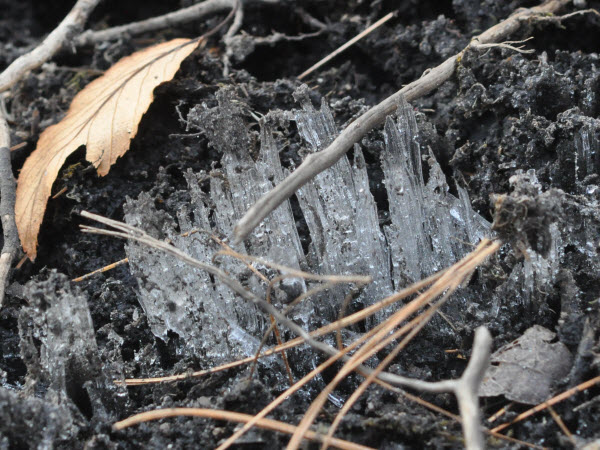

The next group of images is off the surface of a small stream, following a number of zero and below zero days.
This first picture shows the stream and 2 - 3 feet of snow on the ground surrounding.
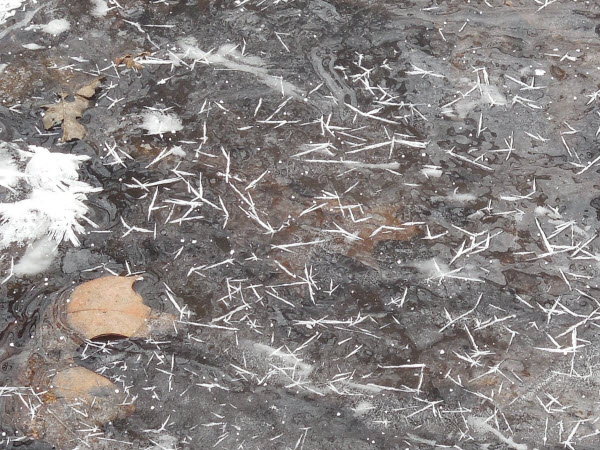
At the edge, where the snow layer beings, it seems these needles are forming - oriented vertically above the water.
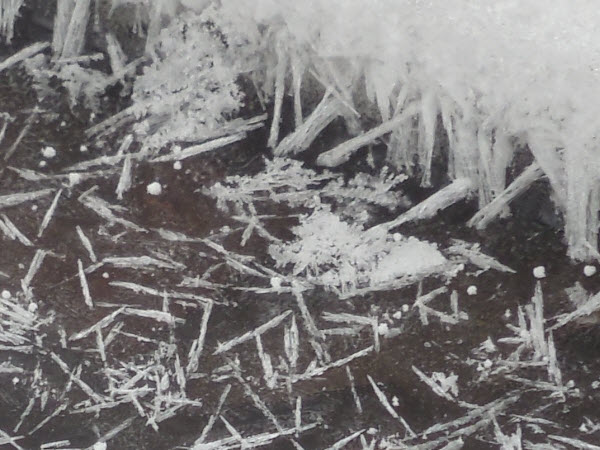
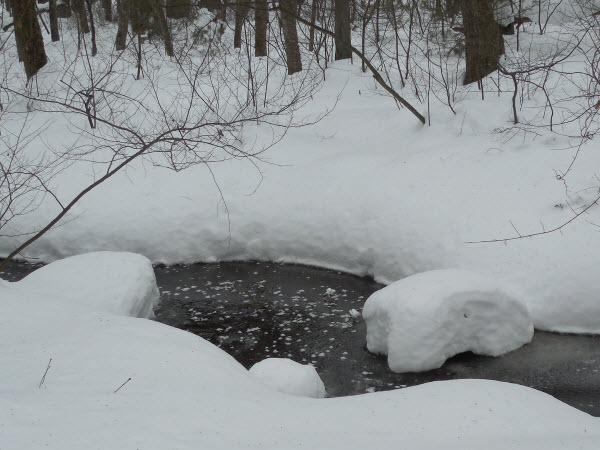
Looking much more closely - these distinctive needles of ice on the surface.

And a detail from the picture above, the structure of these needles seems similar to the ice needles forming under ground in the first set of photos, above. I would return to take another set of photos, preferrably with the camera mounted on a tripod, but the very cold conditions did not last, and a week later the crystals were no longer present. Might have to wait until next winter!
Some winters come with lots of snow - snow that stays for the duration of the winter. Footwear during my weekly walks in the woods with the dogs will shift from boots to snowshoes, and color pictures look entirely black and white - not a trace of color - with a few welcome exceptions!

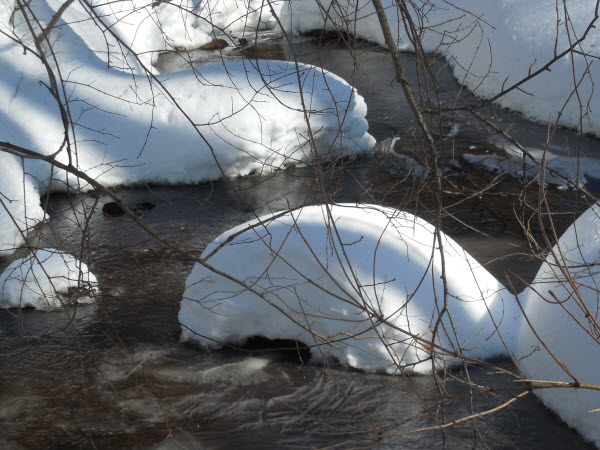
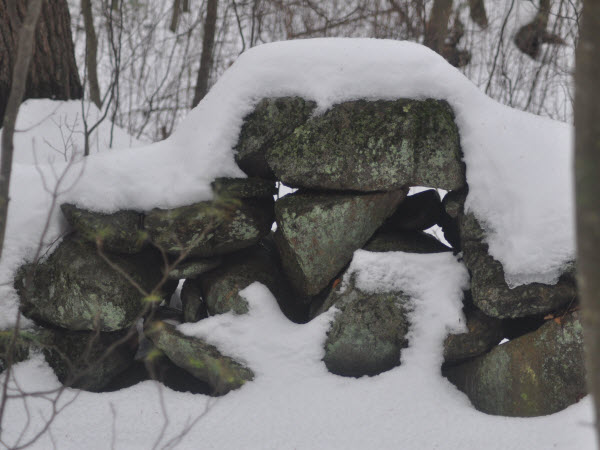
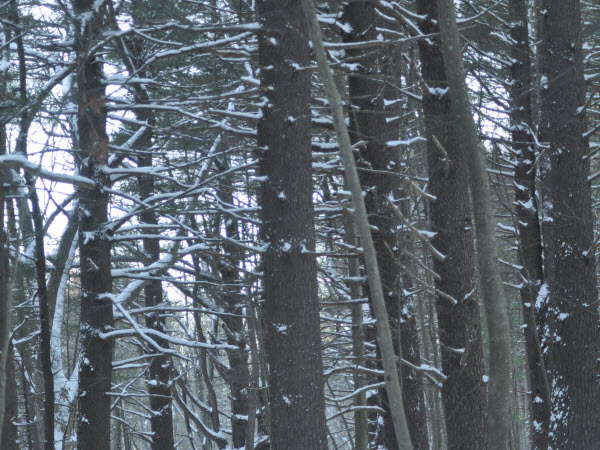
This large boulder marks where two lightly traveled trails come together.
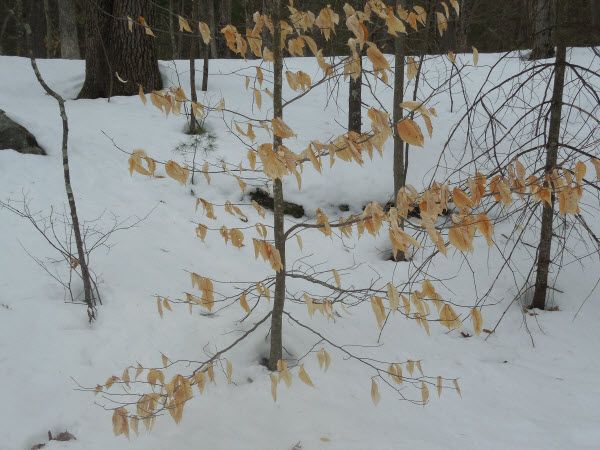
Browns can be a welcome color in the winter! There is a bird on the snow on the rock. And a moss covered rock, in the sun.
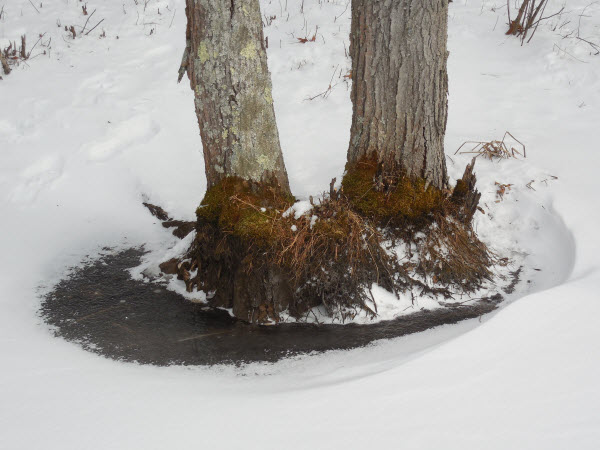
A little bit of color in the middle of the winter! Responding to the warming sun.
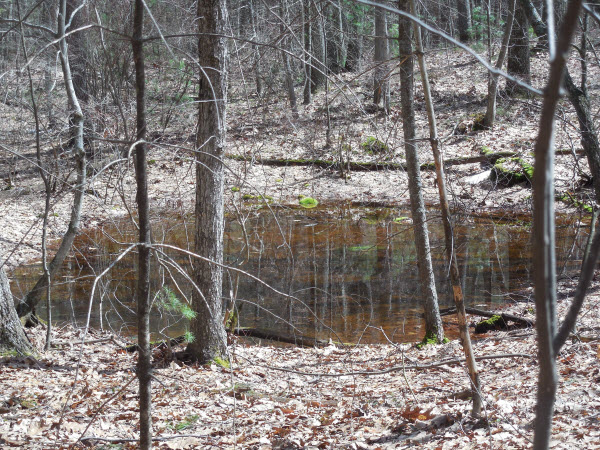


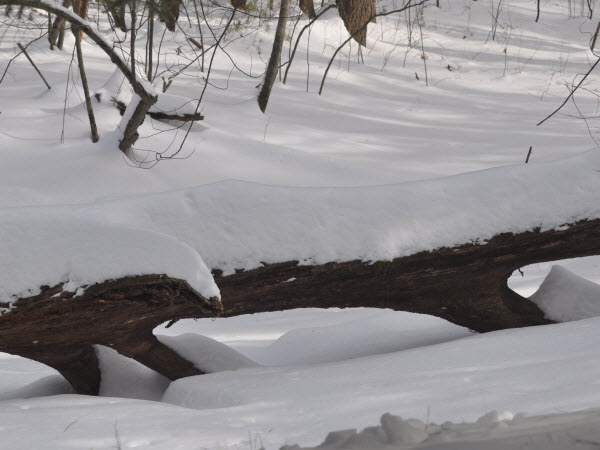
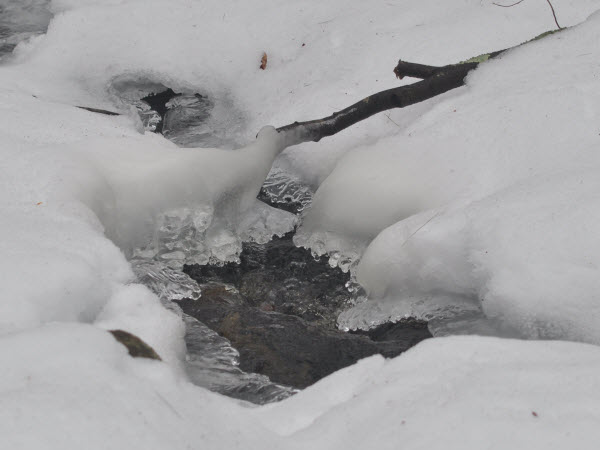
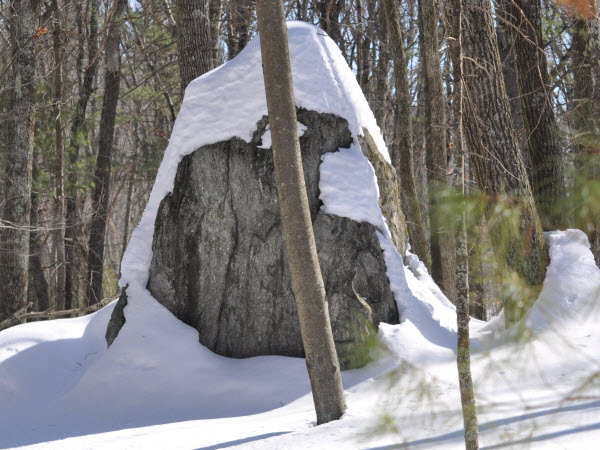
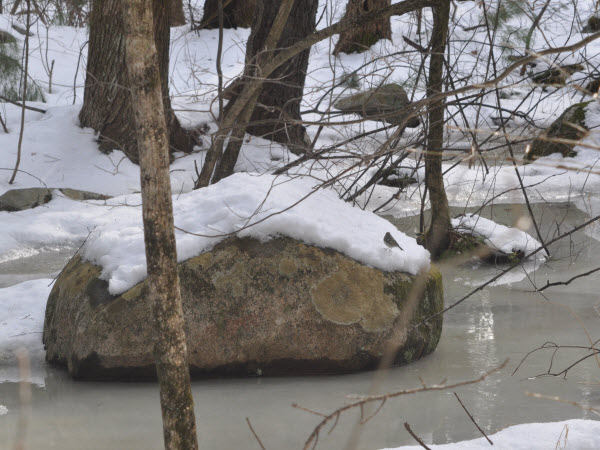
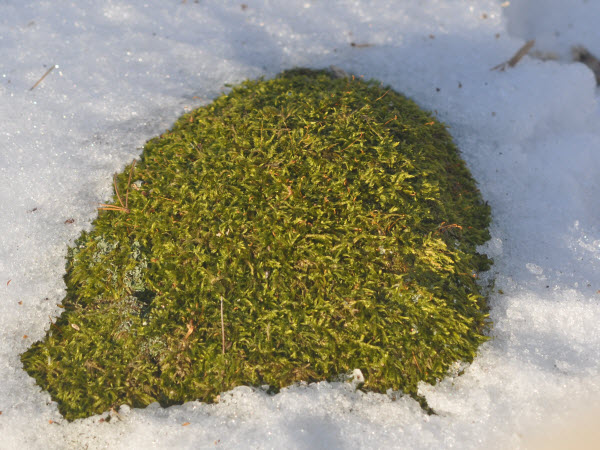
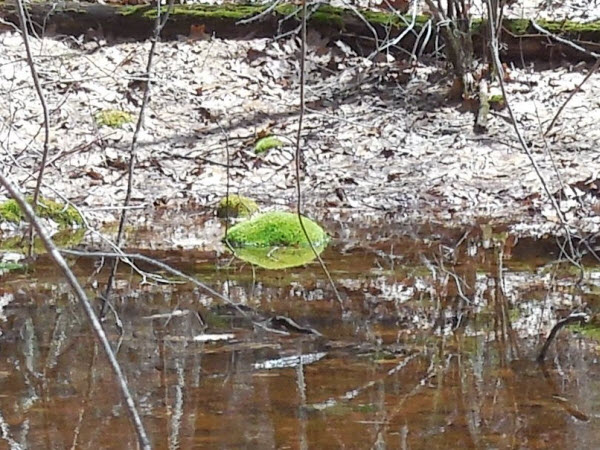
Winter 2014
The winter of 2014 / 2015 was especially cold in the northeast, and snowy. Not inconsistent with global warming, or the current moniker, climate change. The case is made that the weather experienced this winter was due to a shift in the path of the jet stream, which in turn arises from changes in climate secondary to global warming. And there is no getting around the fact that the earth has retained a great deal of thermal energy from the sun over years past.
And so - how much snow was there in the northeast in the winter of 2014 / 2015? Well, there was my neighbor, who parked his pickup truck on top of the snow pile - up at the level of the top of the stop sign! The mile marker shown below is in the Estabrook woods where many of these pictures were taken - the top of an American flag is showing through about 2 feet of snow that made the base along a well travelled path.
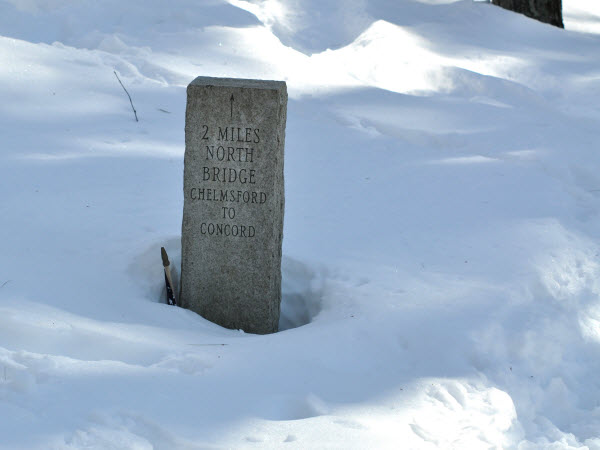
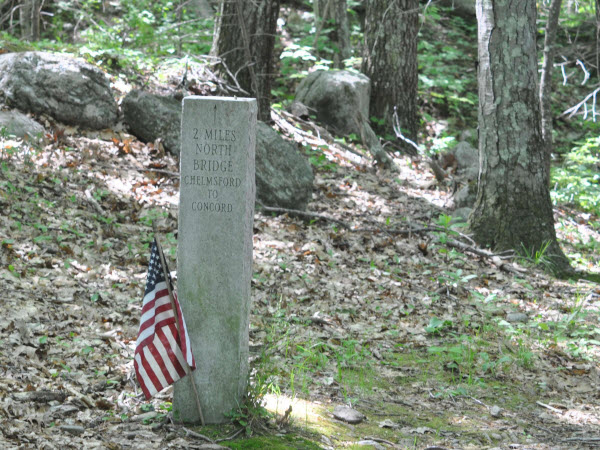
This trunk of a tulip poplar, growing at the soccer field, is remarkably and thoroughly girdled - from the ground up over 20 inches or so - almost 2 feet - which was about the height of the snow during the winter. Martha remarked that she thought voles would do this - and sure enough, taken from this Wikipedia article, ref: https://en.wikipedia.org/wiki/Vole - "voles will readily girdle small trees and ground cover, much like a porcupine".
And ref: http://icwdm.org/handbook/rodents/voles.asp (Internet Center for Wildlife Damage Management):
"Vole girdling can be differentiated from the girdling of other animals by the non-uniform gnaw marks. They occur at various angles and in irregular patches. Marks are about 1/8 inch (0.3cm) wide, 3/8 inch (1.0cm) long, and 1/16 inch (0.2cm) or more deep. Rabbit gnaw marks are larger and not distinct". The image two down looks consistent with this description of vole damage.


Thinking about the level of the snow - for several months the level of snow on this field was more than 2 feet, and so completely covering that part of the trunk that has been girdled. I say this because I know that, when walking on the well packed trails across the field, if I slipped off that packed trail, I would sink to my knee in the soft snow. And so the voles were able to chew on this tree while remaining below the surface of the snow. As a check on the depth of the snow, I have this photo from the winter, in which the back of a bench is just at the level of the snow.

And so the level of snow as greater than 2 feet on the field, coming a little higher than the vole damage on this tree.
This poor tulip poplar has had a couple of setbacks. But a persistent tree - it has already put up a new shoot with nice large health leaves. The original tree did manage to leaf out this year, but the leaves are small.

That same bench, now that the snow is gone - height to the top of the bench is 30 inches.
